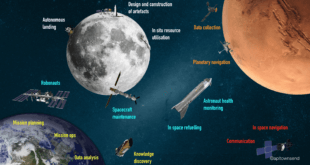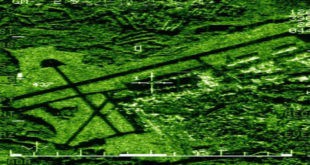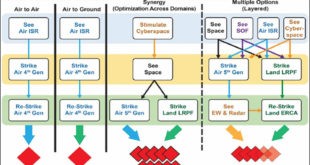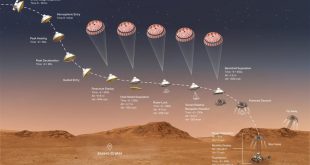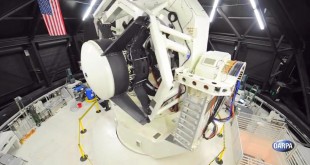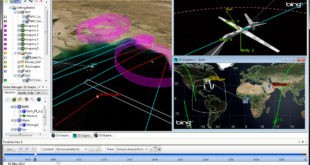Artificial intelligence has long been transforming our daily lives and the daily operations of many businesses. From smart assistants like Siri and Alexa to more complex solutions that optimize business flow in large organizations, the technology has become so pervasive that it has almost become an inseparable companion. But AI’s power …
Read More »DARPA MTR will develop algorithms to enable SAR sensors to detect, geolocate, and image moving ground and airborne targets.
The aim of ground surveillance is the large scale, continuous and near real time determination of a dynamical ground picture. This task comprises detection and tracking of moving single targets and convoys, mobile weapon systems, and military equipment. The sensors of choice are airborne Ground Moving Target Indicator (GMTI) radar …
Read More »Military thrust for Microsatellites and nanosatellite Clusters for more resilient space architectures
Micro- and nanosatellites have emerged as a highly versatile and economical resource for the satellite community, becoming one of the major areas of development and growth. They find application in scientific research, communication, navigation and mapping, power, reconnaissance, and others including Earth observation, biological experiments, and remote sensing. There …
Read More »Indian Threat Scenario, National security threats and future military capability requirements
There are two approaches to connect Warfighting and emerging technologies. One is to consider the present and future threat environment and then through system analysis we can identify technologies required to mitigate those threats. Secondly, we can identify the emerging technologies that can offer new military capability. Coming to …
Read More »NASA Perseverance Rover’s Entry, Descent and Landing on Mars required many Technology breakthroughs
Landing on Mars is hard. Two out of three missions to the red planet have failed. Hundreds of things have to go just right during this nail-biting drop. To get there, will have to fly through about 483 million kilometers (300 million miles) of deep space and target a very precise …
Read More »Countries developing Asteroid mining technologies
Early evidence suggests that there are trillions of dollars’ worth of minerals and metals buried in asteroids that come close to the Earth. These include phosphorus, antimony, zinc, tin, lead, indium, silver, gold and copper. The mining of resources contained in asteroids, for use as propellant, building materials or in …
Read More »DARPA DeMi developing technologies for space based telescope on it’s military CubeSat satellite for Space Surveillance Awareness
The volume of space between the Earth’s surface out to geosynchronous orbit is enormous—equivalent to 240,000 times all the Earth’s oceans. Yet the number of objects calling that volume home is growing all the time—not just with satellites but with debris of all kinds, natural and manmade. And keeping track …
Read More »DARPA operationalizes Space Surveillance Telescope in Australia, earlier handed over to Air Force Space Command to protect satellites from orbiting junk and space weapons
A U.S.-developed space surveillance telescope has been assembled at a new facility in Western Australia and is expected to start operating in 2022, the U.S. Space Force Space and Missile Systems Center announced April 2020. The telescope, designed to track and identify debris and satellites more than 22,000 miles above Earth, …
Read More »The denial of GPS services during Kargil War has driven ISRO to develop Indian Regional Navigation Satellite System (IRNSS), superior to GPS
The Global Positioning System (GPS), is a global navigation satellite system (GNSS) that provides location and time information in all weather conditions, anywhere on or near the Earth where there is an unobstructed line of sight to four or more GPS satellites. Each one transmits information about its position and …
Read More »STK is AGI’s Multi-domain mission simulation software for simulating ground, sea, air, and space missions
Traditional systems engineering approaches to air systems design have been upended by two trends – increasing complexity and accelerating delivery timelines. Digital mission engineering is essential to these new challenges, enabling a system integrator to redirect work from physical systems to their logical representations. Space systems are exceptionally complex, …
Read More » International Defense Security & Technology Your trusted Source for News, Research and Analysis
International Defense Security & Technology Your trusted Source for News, Research and Analysis
